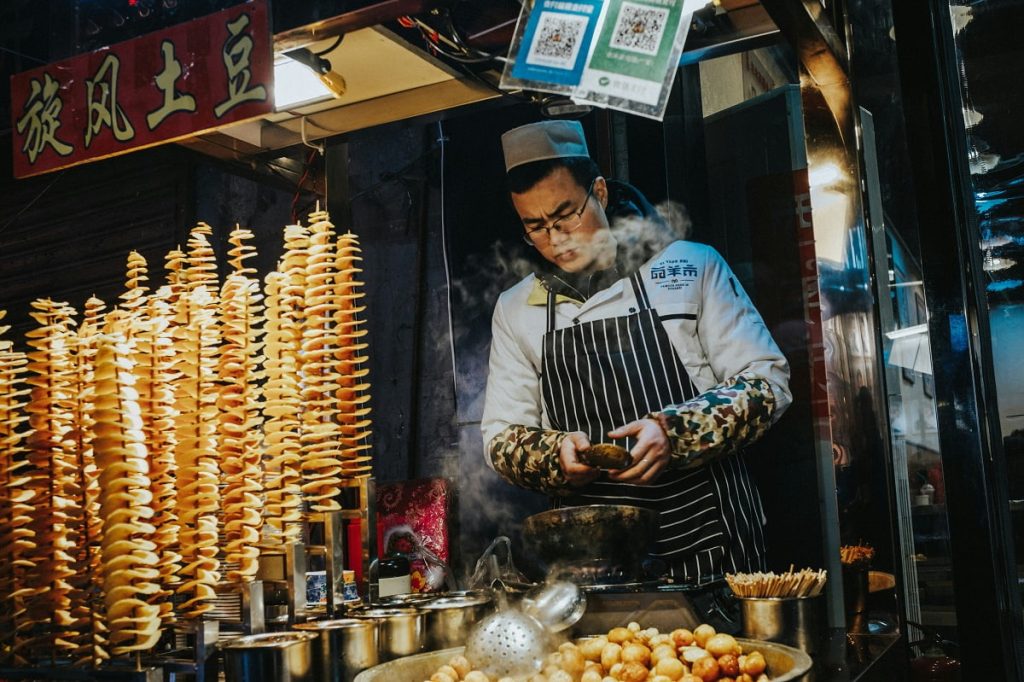The Evolution of Taiwan’s Night Markets into Culinary Powerhouses
By 2025, Taiwan’s night markets have transcended their traditional role as mere casual gathering spots for locals to enjoy quick bites, becoming dynamic centers that have fundamentally reshaped the street dining scene across Asia. Once simply known for their vibrant atmosphere and diverse stalls, these bustling night bazaars now carry cultural weight and gastronomic prestige. They serve as incubators for culinary innovation where street food chefs are no longer faceless vendors but recognized influencers and celebrated artists within the global food community. Taiwan’s night markets have inspired an entire region to reconsider the potential of street food—from humble snacks to haute cuisine—challenging long-held notions of what dining in the streets can represent.
This transformation is the result of decades-long cultural evolution combined with strategic efforts by local entrepreneurs, food historians, and government initiatives aimed at preserving and elevating Taiwan’s culinary heritage. Night markets have become more than a tourist attraction or a late-night indulgence; they are now platforms for culinary storytelling and cultural exchange that capture the complexity and richness of Taiwanese identity. In the process, they have attracted international attention, drawing visitors hungry for authentic yet innovative dining experiences that reflect both tradition and contemporary creativity.
From Stall Operators to Culinary Influencers
A key driver behind the redefinition of Taiwan’s street dining has been the rise of street food chefs as influential personalities with growing followings across social media platforms and beyond. These chefs, many of whom started their careers behind humble carts or makeshift stalls, have skillfully leveraged digital tools to share their craft, recipes, and stories with a global audience. Instagram, TikTok, and YouTube have played pivotal roles in elevating these vendors from local obscurity to international fame.
The newfound visibility has encouraged chefs to experiment with presentation, flavor combinations, and sustainability practices, effectively blending the artistry of fine dining with the accessibility of street fare. Their innovative approaches have caught the attention of global food critics and institutions, culminating in prestigious recognitions such as Michelin Guide nods and inclusion in major culinary festivals. This rare crossover of street food into Michelin territory underscores Taiwan’s influence in redefining quality and excellence beyond traditional restaurant settings.
Many vendors have capitalized on this momentum by opening permanent restaurants, launching product lines, or partnering with tourism campaigns. Their evolving status as culinary influencers has reshaped how street food is perceived—not as cheap or fast but as authentic, creative, and worthy of respect. As a result, Taiwan’s night markets have become fertile ground for gastronomic entrepreneurship, inspiring a new generation of chefs across Asia to embrace their roots while reaching for global audiences.
Tainan and Keelung: Showcasing Taiwan’s Lesser-Known Culinary Gems
While Taipei’s Shilin Night Market remains iconic, it is the lesser-known markets of Tainan and Keelung that have recently stolen the spotlight, further expanding Taiwan’s street food narrative. Tainan, often hailed as Taiwan’s culinary capital, offers an unparalleled depth of traditional flavors shaped by centuries of history and cultural fusion. Its night markets reflect this heritage with delicacies such as coffin bread, oyster omelets, and danzai noodles, drawing food lovers who seek to explore the island’s rich regional diversity.
Keelung, a bustling port city to the north, has similarly gained attention for its night market’s unique seafood-centric offerings and festive atmosphere. The Miaokou Night Market there is famous for fresh shellfish, grilled squid, and aromatic soups, serving as a living testament to Taiwan’s maritime culture and multicultural influences. Both cities provide immersive food experiences far from the more commercialized hubs, emphasizing intimate encounters with local vendors and authentic tastes.

By highlighting these cities’ night markets, Taiwan has broadened the map for travelers and foodies, encouraging deeper exploration beyond the capital. This decentralization has helped preserve culinary traditions in their original contexts, fostering sustainable tourism that benefits smaller communities. Moreover, it demonstrates how Taiwan’s street dining scene is not monolithic but a vibrant mosaic of flavors, techniques, and stories that together define the island’s gastronomic identity.
A Cultural Bridge Through Cuisine
Taiwan’s night markets have become cultural touchstones that appeal strongly to readers and travelers drawn to understanding place through food. They offer more than just meals; they provide narratives of history, migration, and innovation woven through culinary practices. For many, visiting these markets is a form of cultural immersion that reveals Taiwan’s social fabric—its ethnic diversity, collective memories, and evolving urban life.
Food writers, bloggers, and documentary filmmakers have found rich material in the night markets’ sensory layers, capturing the sights, sounds, and aromas that create a unique sense of belonging. This cultural storytelling connects readers to a wider human experience of community and identity, making Taiwan’s street dining scene a powerful vehicle for cross-cultural dialogue.
The night markets’ appeal also lies in their inclusivity and accessibility. Unlike exclusive dining spaces, these markets welcome people from all walks of life, creating communal spaces where locals and visitors mingle over shared meals. This democratization of food fosters encounters that transcend language and nationality, offering authentic connections in a globalized world. The blending of tradition and modernity in the night markets thus mirrors broader social trends, making them emblematic of Taiwan’s ongoing cultural renaissance.
Innovation Meets Tradition: The Future of Street Dining
Looking forward, Taiwan’s night markets continue to innovate while honoring their roots, setting trends that ripple through Asia’s culinary landscape. Sustainability has become a core focus, with many vendors adopting eco-friendly packaging, reducing food waste, and sourcing locally to minimize environmental impact. These efforts align with growing consumer awareness about ethical consumption and contribute to the markets’ longevity.
Technological integration also plays a role in shaping the future experience. Cashless payments, digital menus, and augmented reality guides help streamline operations and enhance visitor engagement without detracting from the authentic ambiance. Some markets have introduced interactive cooking workshops and chef meet-and-greets, further bridging the gap between vendors and patrons.
At the heart of this evolution is a commitment to preserving the night markets’ soul—where community, creativity, and culinary craftsmanship converge. Taiwan’s success in redefining street dining by 2025 serves as an inspiring model for other Asian cities seeking to balance modernization with cultural preservation, proving that street food can be both a cherished tradition and a cutting-edge culinary art form.





















